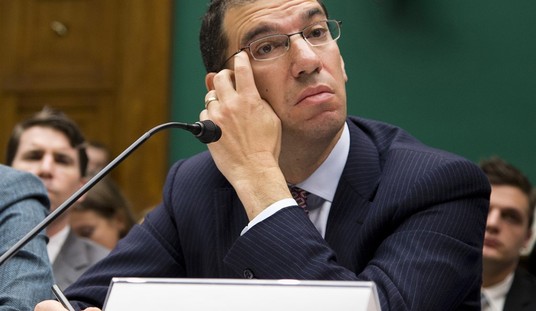You remember the drone strike on August 29 that supposedly intercepted ISIS-K bombers en route to the Kabul airport to kill American soldiers.
The one Mark Milley, who’s having the best month of his life, later described as “righteous.”
Turns out it was not righteous:
BREAKING: Gen. McKenzie, head of U.S. Central Command, to announce no ISIS-K fighters killed in U.S. drone strike in Kabul Aug 29. 10 civilians killed, including 7 children in Toyota. No disciplinary action expected, officials say. US military stands by intel leading to strike.
— Lucas Tomlinson (@LucasFoxNews) September 17, 2021
I don’t know what that last bit means about the military standing by the intelligence. It’s either bad reporting or the military is adopting a version of “fake but accurate” to explain a pile of dead Afghan children.
The NYT reported last week that the alleged ISIS-K bomber targeted by Centcom wasn’t a bomber at all but rather an aid worker who was seen loading water into his trunk. The military, on high alert for a second ISIS-K attack at the airport before the U.S. finally evacuated, supposedly mistook that for explosives.
The Times was right. And now here we are.
Gen. McKenzie: "I am now convinced that as many as 10 civilians, including up to 7 children, were tragically killed in that strike…it is unlikely that the vehicle and those who died were associated with ISIS-K…I offer my profound condolences." pic.twitter.com/w6M4LEbX3b
— CSPAN (@cspan) September 17, 2021
Axios reminds us that U.S. officials said after the strike that they “know” it disrupted an ISIS-K attack. Jen Psaki was also sanguine two days after:
PSAKI, 8/31: “What we’ve seen over the past week is that our over the horizon capacity can work and has worked in going after ISIS targets, and killing people who went after our troops. So that’s where our resources and our focus is going to be on at this point in time.”
— Jacqui Heinrich (@JacquiHeinrich) September 17, 2021
The military may have been fooled into believing that the target was a terrorist because there was a secondary explosion after the missile struck. That must have been the explosives in the car going off, they thought. In reality, per the Times, it was probably a propane or gas tank that ignited. The only connection to terrorism that the driver had was a brief visit to what the Pentagon suspected was an ISIS-K safe house earlier in the day, possibly to deliver water. “In the lead up to the strike, drone operators surveilled the courtyard for up to 4 to 5 minutes. In that time, a male driver left the vehicle. One child was parking the vehicle and other children were present in the car and the courtyard,” according to CNN.
McKenzie says in the clip that he’s fully responsible for the error. Does that mean he’s resigning or is this another of those “the bucks stops here but not really” statements that U.S. political and military leaders routinely give?
Milley is sorry but the buck won’t stop with him either, I’m sure:
“In a dynamic high threat environment, the commanders on the ground had appropriate authority and had reasonable certainty that the target was valid, but after deeper post-strike analysis, our conclusion is that innocent civilians were killed,” General Milley said in a statement. “This is a horrible tragedy of war and it’s heart-wrenching and we are committed to being fully transparent about this incident.”
There are three takeaways here. One: Biden’s “over the horizon” approach to conducting counterterrorism in Afghanistan from afar is off to a very, very bad start. If we can’t distinguish aid workers from terrorists without eyes and ears on the ground, a lot of innocent people are going to die.
Two: One can’t help but wonder if this strike was clear-eyed but mistaken or if it was a case of the military acting rashly in its eagerness to avenge the fallen soldiers killed by ISIS-K in the airport bombing. Similarly, one can’t help but wonder if the White House authorized the strike because it was confident in the intelligence or because Biden thought he needed to flex some muscle amid weeks of the U.S. looking pitifully weak at the mercy of the Taliban.
Three: There was no more horrifically fitting way to end an aimless war in which we never seemed to fully understand what was going on than by droning an innocent man and a group of children. We were clueless about macro matters, like how soon the Taliban might overrun the country, and we were clueless about micro matters, like who was truly friend or foe or whether it was water or explosives being loaded into a car trunk. You can hate the half-assed way in which Biden withdrew while also appreciating that he wasn’t wrong to doubt that his generals knew what they were doing in Afghanistan.








Join the conversation as a VIP Member